We’ve now completed a third rotation of the Player’s Handbook, meaning that almost every class has had every subclass from that book examined in the Class 101 series! Two classes with lots of subclasses—the cleric and wizard—will need a little extra time to cover. Starting this week, however, we’re moving away from the Player’s Handbook and taking a look at the brand-new subclasses that you’ll find in Tasha’s Cauldron of Everything!
The first new subclass from Tasha’s is also from the game’s newest class: the artificer. This subclass, the Armorer, is a favorite of both Todd Kenreck and myself, because of the way they straddle the line of fantasy and science fiction with their magical power armor.
Artificers are most common in the world of Eberron, as described in Eberron: Rising from the Last War. However, artificers of some sort can be found all throughout the D&D multiverse. You can find artificers in the Forgotten Realms on the isle of Lantan, among the gnomes of Hupperdook in Wildemount, and filling all levels of prestige within the ranks of the Izzet League on the world-city of Ravnica—just to name a few settings where artificers can be found. If you’re playing D&D in another world or in a homebrew setting, talk with your Dungeon Master about how you could integrate artificers into this world.
Check out the other guides in the Class 101 series, like the broad overview of the artificer class in Artificer 101: A Beginner’s Guide to Making Magical Marvels, or a deep dive into a specific subclass in Artificer 101: Alchemist. If you’re interested in playing other classes, check out the entire Class 101 series.
Story of the Armorer
“And that is the Mark 1 Guardian.” A half-orc dressed in oil-covered clothing whistled in awe. Her hair was pulled into a high ponytail and her biceps glistened under the light of the forge. She turned to the hobgoblin beside her, who looked on in awe at the suit of steel plate armor that hung on the wall before them both. “I’m afraid it’s for personal use only. Not for sale.”
“Your pièce de résistance?” the hobgoblin replied gruffly.
“My masterpiece,” the armorer replied proudly. “But I’m not so precious to think that it’s perfect. You can see that I haven’t bothered polishing it.” Just as she said, the armor was rough, unfinished, and unpolished. By its appearance, it hardly befitted the title of masterpiece.
“My warriors care little for polish,” the hobgoblin said guilelessly. “We are interested in strength and durability. You can provide both?”
The half-orc armorer laughed. “In spades, my friend. My apprentices and I can supply you with armor that will suit your mercenary company’s needs, but you deserve something better, don’t you? Would you care for a demonstration? I can’t promise you something quite as good as the Mark 1, but you’ll see that my armor is made of more than just steel.”
The hobgoblin barked out a jagged laugh. “A claim I’ve heard a hundred times. Go on, armorer, prove the worth of your steel!”
A smile crossed the armorer’s face, just wide enough for one of her stubby tusks to pop out from behind her lips. She strode across the room and placed her hand on the chest piece of her Mark 1 Guardian. Its plates shuddered at her touch, then sprung to life and rolled down her arm like an army of dully glinting beetles. In seconds, there was a click as the metal plates which had slithered over her body snapped into place. The tiny runes engraved around the edges of each plate glowed with faint white light, and her heavy gauntlets thrummed with barely restrained thunder.
The armorer reached to a weapon rack and tossed a longsword to the hobgoblin, who caught it deftly, even taken by surprise. His mouth hung slightly agape, and his eyes darted up and down the half-orc’s armored body, drinking in the details of her handiwork. She set her feet in a fighting stance and pointed her open palms at the hobgoblin, causing a faint pulse of rumbling magic to hum through the air between them.
“Is this demonstration enough, sir?” she asked cheekily. “Or would you prefer to test the Guardian’s might yourself?”
The hobgoblin laughed again, this time with complete, unchecked mirth. He set the sword down upon a bench and held his hands over his shoulders. “I yield, armorer! You are no charlatan, I trust that your steel is honest. Are you certain your Guardian is not for sale?”
The half-orc shook her head. “It’s bonded to me, sir. It wouldn’t be more than a suit of ill-fitting plate mail on the shoulders of another.”
“Then…” the hobgoblin turned to the armorer slyly. “Perhaps I can make an offer for your armor with you still in it. There are tasks too dangerous even for my mercenaries to take on—if you would be willing to leave your forge, we could use an adventurer. My pockets are deep, armorer.”
Armorer Features
Armorers are artificers who have specialized in the craft of armor smithing. Like any good artificer, they don’t simply make armor, they make miracles. The artificer gains four subclass features at 3rd, 5th, 9th, and 15th level. You can read all of the Alchemist specialty features in Tasha’s Cauldron of Everything. In summary, your subclass features allow you to:
- Become proficient with smith’s tools
- Learn new spells thematically appropriate for an armorer
- Create a suit of arcane armor that only you can wear, gaining special powers if it’s in its Guardian or Infiltrator form
- Attack more than once per turn, making you a more dangerous fighter
- Infuse the individual components of your Arcane Armor with magic
- Perfect your Guardian and Infiltrator armor models
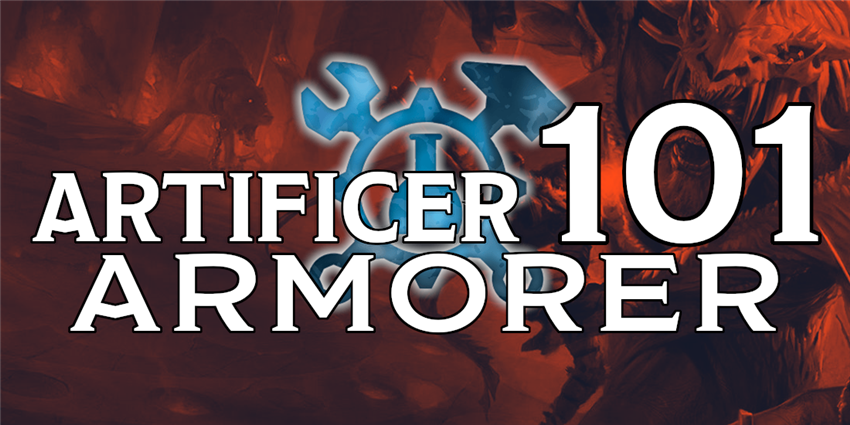
Benefits of the Armorer
The Armorer subclass lets the artificer take on a surprising role in combat: the role of tank! No one would expect the artificer, a class that is by all accounts a fantasy scientist, to be able to step out onto the battlefield, hollering for all blades to be turned upon them, yet this is exactly what the Armorer artificer is able to do with the Guardian model of their Arcane Armor. Better yet, they aren’t pigeonholed into the tank role. After a short rest, the Armorer can retool their Arcane Armor into the sleek and stealthy Infiltrator model, allowing them to slink quickly through the shadows.
Notably, both armor models let you do something that few other classes can do. The Guardian model’s Thunder Gauntlets allow you to “taunt” foes when you hit them, encouraging them to attack you by imposing disadvantage on that creature’s attacks against other foes. To improve your survivability, it also allows you to gain a surge of temporary hit points to mitigate incoming damage.
All of the Armorer’s class features either synergize with both armor models, or specifically improve one of them. For instance, the Extra Attack feature is useful for striking multiple targets with the Guardian model’s Thunder Gauntlets, thus “taunting” more foes. While it’s less useful on the Infiltrator model, having another attack makes it more likely for you to hit at least once with your Lightning Launcher, which gets bonus damage once per turn.
Taken together, this bevy of powerful and versatile features transform you into a terror on the battlefield, while still wielding an artificer’s spells and the ability to infuse your allies’ items with magic to support them in whatever dangerous situations you might face.
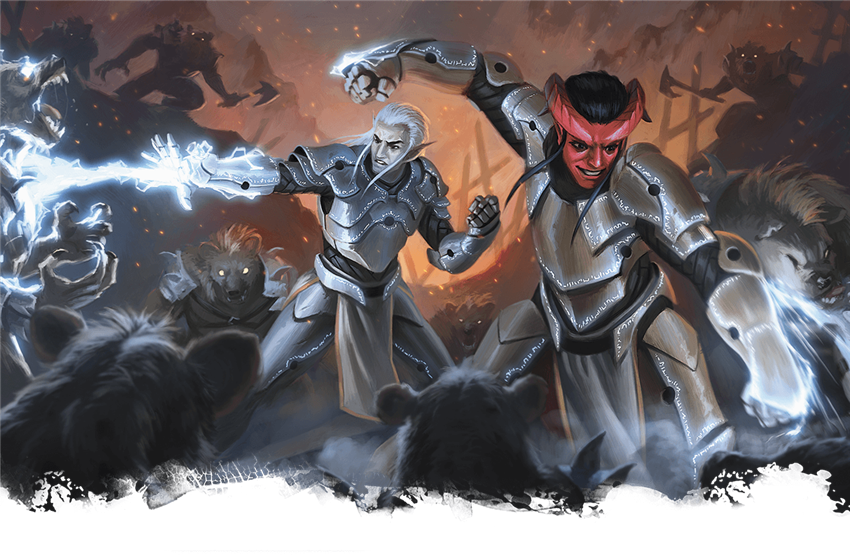
Drawbacks of the Armorer
The Armorer is a powerful subclass, but that power comes at a price. The most significant price is the price of paperwork. The Armorer’s 9th-level feature, Armor Modifications, lets you enchant your Arcane Armor in an incredibly granular way. This feature separates your armor into segments, each of which can be infused separately. This is a substantial boost to your power, and D&D Beyond’s digital character sheets will help you keep track of all your features, but you still have to do the work of deciding how to allocate your infusions—and more importantly, re-allocate your infusions whenever you want to change up which infused items you have available to you.
This leads to the most significant drawback of the Armorer subclass: a tradeoff between personal power and team support. The Armorer is one of the most self-sufficient artificer subclasses in the game. However, a hallmark feature of the artificer is their ability to infuse items with magic, not just for their own use, but for their allies’ use. Similarly, other subclasses have a number of spells and class features that encourage artificers to support their allies, rather than becoming the center of attention themselves. The Armorer subclass isn’t without these features—the Guardian model Arcane Armor is one of the best tanking tools in D&D—but it vastly minimizes party support in favor of personal power. If you want to play a support character, this isn’t the subclass for you.
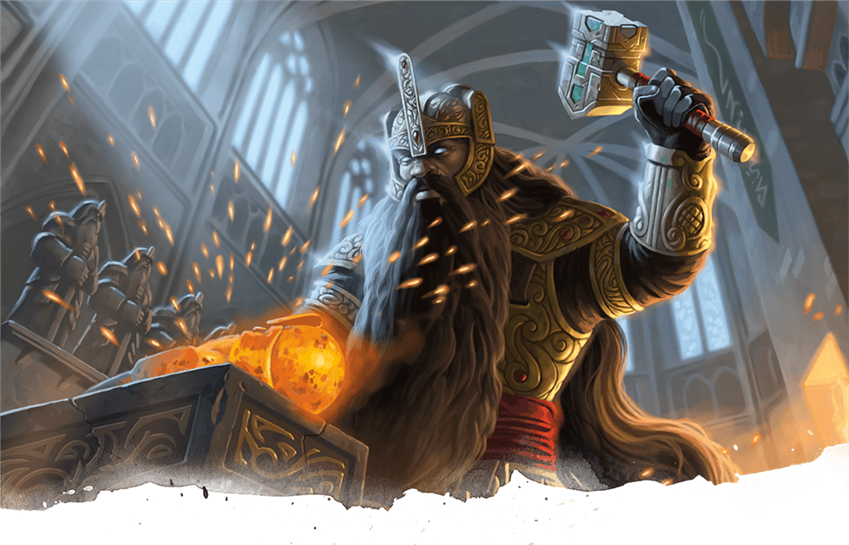
Suggested Build
As an artificer, you choose what kind of Artificer Specialist you want to be at 3rd level. This gives you time to figure out what sort of role you want to fill in the party. If you decide that you want be a flexible character who can tank blows for their allies one encounter and slip unseen into the shadows the next, Armorer is custom-fitted for your needs. To learn about the other roles the artificer class can fill, check out Artificer 101: A Beginner’s Guide to Making Magical Marvels.
All artificers need a keen intellect in order to be effective. As such, prioritize making your Intelligence score as high as possible. Even though you’ll often be striking foes with your fists, your magical Thunder Gauntlets allows you to add your Intelligence modifier, rather than your Strength modifier, to attack and damage rolls. Beyond that, it’s useful to improve your Dexterity and Constitution scores to improve your somewhat meager hit points, and to improve your AC if you decide to wear medium armor rather than heavy armor.
An Armorer should place their highest ability score in Intelligence and their second-highest in either Dexterity or Constitution, depending on whether you think stealth or tanking is more important to you. Thanks to the new “Customizing Your Origin” section in Tasha’s Cauldron of Everything, you don’t have to let your character’s race dictate their ability scores; you can reassign your racial ability score bonuses to any score you see fit. If you’re playing without these rules, the rock gnome and high elf races grant useful bonuses to Intelligence and other useful abilities, plus other mechanical bonuses. However, the best way to create a character is to choose the race suits your character best, and build outward from there.
Choose EQUIPMENT instead of GOLD at the end of character creation. Your two simple weapons can be anything that you think fits your character’s aesthetic. You still have to grow from 1st to 3rd level before you choose your Armorer subclass, so your starting equipment doesn’t have to perfectly match what you want your character to wear when they master the craft of armoring. Choose scale mail for a solid defense—one that you can turn into your Arcane Armor later if you don’t find anything better on your adventures in the interim. Choosing a set of thieves’ tools will make infiltrating locations with your Infiltrator model armor much easier!
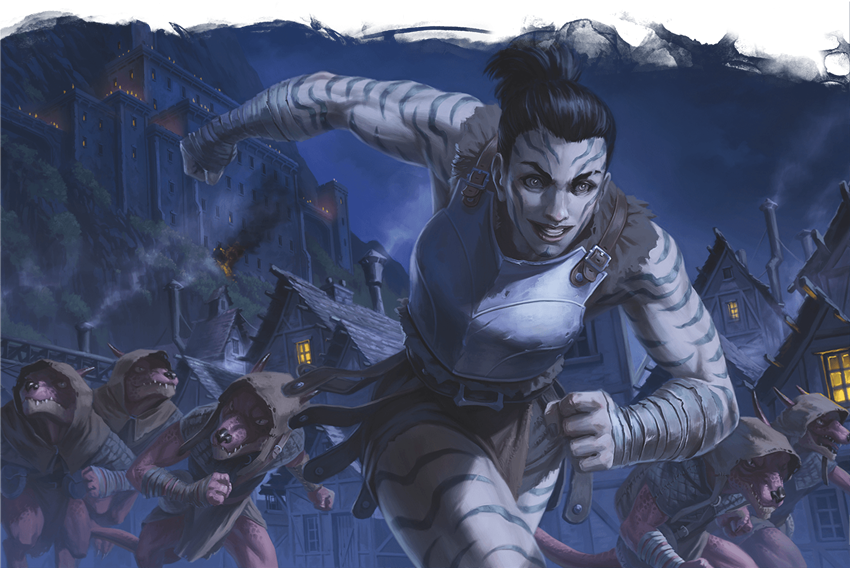
Spells
You prepare your spells, just like a cleric or druid. At the end of every long rest, you can prepare a number of spells from the artificer spell list, and can use your spell slots to cast these prepared spells in any combination. When you prepare spells, you can choose a number of artificer spells equal to your Intelligence modifier + half your artificer level, rounded down (minimum of one spell). You also start play with two cantrips, also chosen from the artificer spell list. These cantrips are 0-level spells that you can cast an unlimited number of times per day.
As an Armorer, you’ll want at least two spells marked DEFENSE, one spell marked OFFENSE, and one spell marked either SUPPORT, SOCIAL or UTILITY, depending on how you want to play your character.
- Absorb elements (DEFENSE/OFFENSE)
- Catapult (OFFENSE)
- Cure wounds (SUPPORT)
- Detect magic (UTILITY)
- Disguise self (SOCIAL)
- Faerie fire (SUPPORT)
- Feather fall (UTILITY)
- Grease (DEFENSE)
- Sanctuary (DEFENSE/SUPPORT)
Infusions
 Starting at 2nd level, you’ll be able to infuse items with magical power, turning them into something greater than what they were before. At 2nd level, you know four different infusions, and can have two of them active at a time. The infusions you pick should be largely based not on your build, but the composition of your party. What infusions do they need to be more powerful? Every time a party member does something awesome with an infused item you’ve given them, that’s a win for both of you.
Starting at 2nd level, you’ll be able to infuse items with magical power, turning them into something greater than what they were before. At 2nd level, you know four different infusions, and can have two of them active at a time. The infusions you pick should be largely based not on your build, but the composition of your party. What infusions do they need to be more powerful? Every time a party member does something awesome with an infused item you’ve given them, that’s a win for both of you.
You learn four infusions at 2nd level, and can replace any infusion you know with another one whenever you gain a level. The infusions available to you at 2nd level are:
Enhanced Arcane Focus. For parties with spellcasters in it. Even though you usually use your artificer's tools as a spellcasting focus, you can benefit from this infusion as well—since any item you create can be used as a spellcasting focus!
Enhanced Defense. For parties with heavily armored allies. You can use this one yourself, if enemies have been focusing you down lately!
Enhanced Weapon. A broadly useful infusion for parties with damage-dealing powerhouses in it.
Homunculus Servant. For the artificer who needs a little helping hand, you create a tiny creature that can deal a little bit of damage in combat, but is mostly useful for helping you as a conduit for your spells.
Repeating Shot. For parties with ranged attackers. You can empower a ranged weapon with a magical bonus to attack and damage, and grant it the ability to conjure and load its own ammunition!
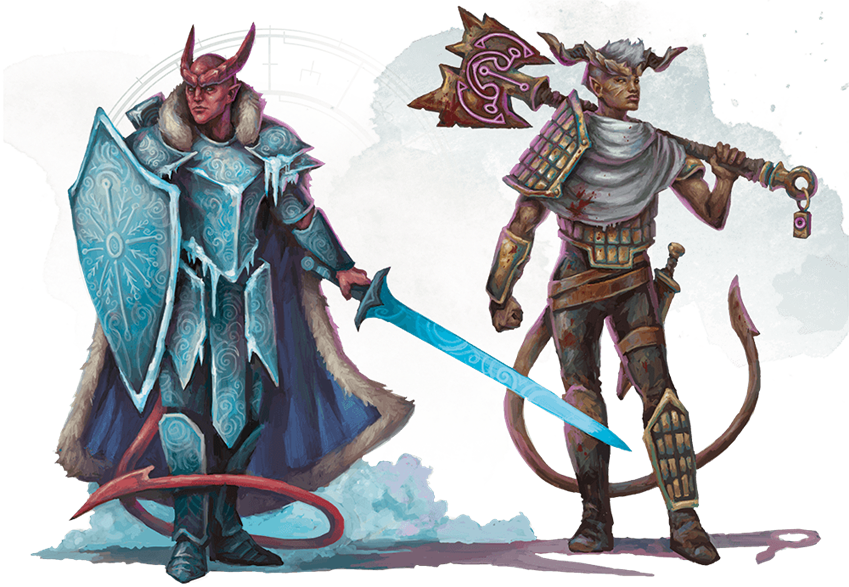
Feats
Once you’ve improved your Intelligence score to 18 or 20, you can increase your power with a few useful feats. The following feats are good picks for Armorer artificers, and will improve your reliability in your own desired area of expertise:
Eldritch Adept. Using this new feat from Tasha’s Cauldron of Everything, you can infuse your artificer with a bit of a warlock’s unsettling magic. Choosing the invocations like Mask of Many Faces and Devil's Sight makes you a more potent infiltrator. The only question is…where does this power come from?
Heavy Armor Master. If you plan on tanking in heavy armor, this damage-reducing feat is a useful one for you, especially due to your relatively low hit points.
Mobile. Tanks like to rush into combat and attract the attention of many foes at once. Sneaks like to move quickly and quietly. Since you have the power of both these roles, Mobile is almost always going to be useful for you!
Sentinel. There simply isn’t a better feat for a tank to take. Be sure to take this if you plan on tanking a lot for your party.
Shadow Touched. This new feat from Tasha’s Cauldron of Everything tinges your artificer with the gloom of the Shadowfell—a useful gift to have for anyone who wants to make excellent use of their Infiltrator model armor.
Tough. Plan on taking lots of damage to spare your party from being hurt? Then it would be smart to pick up a few extra hit points.
If you want more advice for building an artificer, check out Artificer 101. Have you ever played an Armorer artificer? What advice would you give to players that want to play this subclass? Join us next week as we dive deep into the contents of Tasha's Cauldron of Everything with Barbarian 101: Path of the Beast!
Create A Brand-New Adventurer Acquire New Powers and Adventures Browse All Your D&D Content
 James Haeck is the lead writer for D&D Beyond, the co-author of Waterdeep: Dragon Heist, Baldur's Gate: Descent into Avernus, and the Critical Role Explorer's Guide to Wildemount, a member of the Guild Adepts, and a freelance writer for Wizards of the Coast, the D&D Adventurers League, and other RPG companies. He lives in Seattle, Washington with his fiancée Hannah and their animal companions Mei and Marzipan. You can find him wasting time on Twitter at @jamesjhaeck.
James Haeck is the lead writer for D&D Beyond, the co-author of Waterdeep: Dragon Heist, Baldur's Gate: Descent into Avernus, and the Critical Role Explorer's Guide to Wildemount, a member of the Guild Adepts, and a freelance writer for Wizards of the Coast, the D&D Adventurers League, and other RPG companies. He lives in Seattle, Washington with his fiancée Hannah and their animal companions Mei and Marzipan. You can find him wasting time on Twitter at @jamesjhaeck.








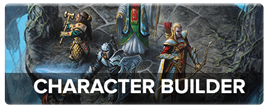
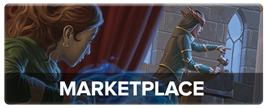

-
View User Profile
-
Send Message
Posted Dec 2, 2020I'm going to use that to pitch to my players later on. I really want one of them to play artificer since my setting is sort of based on the turn of the century (1890's~1910) and there's a decent amount of technology around for them to fiddle with.
-
View User Profile
-
Send Message
Posted Dec 2, 2020I'm not gonna go that deep into the mechanics, but I can totally see any Eberron artificer becoming an Armorer because they actually want to be a warforged XD
I already turned IronMan into a D&D character (and I don't think I'm the only one), but this class is way better at it, so why not?
-
View User Profile
-
Send Message
Posted Dec 2, 2020My idea for an Armorer is someone who's an incompetent wizard that compensates by loading themselves to the gills with improvised magic items.
-
View User Profile
-
Send Message
Posted Dec 2, 2020To be honest that's my idea for 90% of any artificer I want to play, but they just strap their magic items on different things.
-
View User Profile
-
Send Message
Posted Dec 2, 2020Regarding this granularity, it seems unclear to me from the wording in Tasha's whether the armor segments are each able to hold an armor infusion (as they are all still segments of a suit of armor), or if they must hold an infusion relevant to the particular segment (as they are specified as breastplate, helmet, boots, and weapon).
If they must be segment-specific (i.e. helmet segment can only have a helmet infusion, not an armor infusion), that seems to vastly limit Armor Modifications as a feature, because there's only one helm and one boot infusion.
-
View User Profile
-
Send Message
Posted Dec 2, 2020They can hold any of the helmet or boot options found under the Replicate Magic Item infusion.
-
View User Profile
-
Send Message
Posted Dec 2, 2020do battle smith nest
-
View User Profile
-
Send Message
Posted Dec 2, 2020They are "segment-specific", as you put it. There are more than one type of boot and helm, there are all of the ones in the Replicate Magic Item tables, like Boots of Speed, Winged Boots, Helm of Telepathy, and so on.
-
View User Profile
-
Send Message
Posted Dec 3, 2020With the fact that the thunder gauntlets are an "unarmed attack" would it work to spec into monk for the flurry of blows? Might be a good choice.
-Edit, RAW a monk does not get flurry of blows while armored.
-
View User Profile
-
Send Message
Posted Dec 3, 2020This is from Tasha's
Thunder Gauntlets. Each of the armor’s gauntlets counts as a simple melee weapon while you aren’t holding anything in it, and it deals 1d8 thunder damage on a hit
Not sure they count as unarmed attacks. But take anything I write about a Monk with a grain of salt......personally hate the class.
-
View User Profile
-
Send Message
Posted Dec 3, 2020I'm hoping the Artillerist article comes next!
-
View User Profile
-
Send Message
Posted Dec 3, 2020They don't count as an unarmed strike. If they did, it would be written in the text.
-
View User Profile
-
Send Message
Posted Dec 3, 2020That makes a lot more sense; I hadn't considered the Replicate Magic Item infusions, as the wording of RMI struck me as the RMI items being 'created', as opposed to the other infusions 'enhancing' mundane items.
That said, it still seems unclear and somewhat convoluted.. For example, Eyes of Charming fit over the eyes; would they be a valid helm infusion? Or Slippers of Spider Climbing, which are "light shoes" - valid for boots?
I can see where the design intent is kind of going with the subclass, but to me it's frustratingly unclear because the subclass' power and flexibility could drastically change depending on how it's interpreted, so it'd sure be nice to have a 'here's what we were aiming for' kind of statement.
-
View User Profile
-
Send Message
Posted Dec 3, 2020No, slippers don't count as boots. The magic item you're going to create with the infusion has to have the same name as the thing you're infusing. For example, if you want to infuse some slippers with the Replicate Winged Boots infusion, RAW, that does not work. A DM can overrule this and choose to allow it, as there's not really any balance issues with it, but it doesn't work according to how the rules are written.
-
View User Profile
-
Send Message
Posted Dec 4, 2020first off, with a bit of optimizing you can not only have Ironman, but captain America, and the Mandalorian, all are fun.
now, I am looking for some clarity here, with the infiltrator power armor type how exactly do the lightning launchers work over a period of combat? is it an initial d6 on the target and if for some reason you manage to make an attack of opportunity against any target you can also tag your initial target with another d6?
"Once on each of your turns when you hit a creature with it, you can deal an extra 1d6 lightning damage to that target."
it work a bit like the assassin's sneak attack bonus? like, I hit target A, with two attacks of lightning launcher at lvl 5, and add another d6 to it then and there right? would the wording "your turns" limit this to simply one extra d6 per turn?
as for the issue with infusing segments of power armor, since it is missing in equipment and infusion management, I simply made the item and added it to inventory. The problem is that if you are perhaps wearing heavy armor while in infiltrator mode DDB still imposes disadvantages on stealth, just the same it does not remove armor or str requirements from other modes, so I homebrewed a segmented armorer's gear (helm, chest, gauntlets, greaves, boots, bracers, belt, pauldrons etc... you get the idea). this lets you adjust the properties for the class and subclass features, as well as properly control one's infusions.
-
View User Profile
-
Send Message
Posted Dec 4, 2020Its essentially a once per turn sneak attack
-
View User Profile
-
Send Message
Posted Dec 4, 2020That's what I was thinking, later on it is more fun, especially if you can increase the number of targets you have struck with them and then let the party have at it...
-
View User Profile
-
Send Message
Posted Dec 4, 2020The concept of tanking isn't really that strong when the impetus to focus on the armorer isn't there.. have to remind dm that thunder gauntlets essentially compel a target to really prefer going after the armorer, but nothing really forces them to do it. With infiltrator, magical strength infusion, gunner feat you can still be stealthy, still not be burdened by plate, still pew pew in melee and still be damned hard to hit.
Some dm forget to think about why a monster would attack a target. If a goblin hit a player and watched them fall limp, would they keep hitting them or move on to other targets first right? Unless the mob is either incredibly evil or really hungry it bothers me when a dm accidentally lets a player get killed outright.
Anyways, there still needs to be more compulsion to focus on attacking a tank, we dance around there being those kinds of roles though the game itself either doesn't or forgets to include that concept.
-
View User Profile
-
Send Message
Posted Dec 7, 2020Fun fact: using a pencil and paper character sheet negates the need to worry about what the website can track, because the only things that won't work are the things you forget to write down.
-
View User Profile
-
Send Message
Posted Dec 7, 2020Your name certainly checks out.